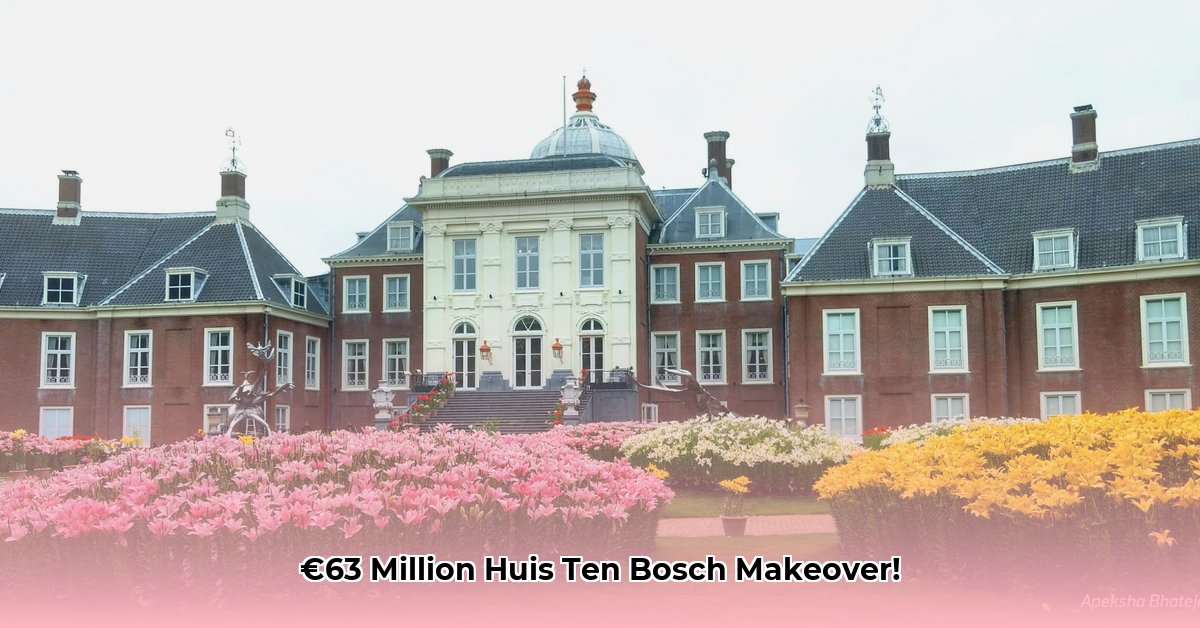
A Royal Residence Transformed: History Meets Modernity
Imagine stepping into a palace where centuries of history intertwine seamlessly with contemporary elegance. That's the magic of Huis Ten Bosch Interieur, the Dutch Royal Family's official residence, after its recent €63 million transformation. This wasn't just a renovation; it was a masterful blend of meticulous restoration and innovative design, resulting in a living testament to Dutch heritage and royal taste. The project, spanning four years, was far more than a fresh coat of paint; it involved a complete overhaul of systems and a subtle yet profound shift in aesthetics, reflecting the personal preferences of King Willem-Alexander and Queen Máxima.
A Palace's Rich Tapestry: Centuries of History
Huis Ten Bosch Palace boasts a rich history, its architecture a captivating blend of styles reflecting centuries of additions and alterations. Originally a 17th-century summer retreat, it’s lived through French occupation, wartime damage, and previous renovations. Each era has left its mark, enriching its layered history. This latest renovation, however, is unique in its scale and vision. It wasn't just about preserving the past; it was about creating a functional and aesthetically pleasing space for a modern royal family.
The €63 Million Transformation: A Masterclass in Restoration
The scale of the project is truly breathtaking. Over 8,785 square meters of living space received a royal makeover. This involved replacing outdated systems, removing hazardous materials like asbestos, and completely upgrading the plumbing and electrical infrastructure. The sheer quantity of materials used underscores the magnitude of the task: over 800 square meters of gleaming marble floors, 40,125 meticulously placed slates, and a show-stopping 60,000 ceramic tiles in the ADN salon alone. It was a monumental undertaking, requiring the skills of countless artisans and specialists. Did you know that the project also included a complete roof restoration? This alone speaks to the depth of this extensive refurbishment.
A Fusion of Styles: Tradition and Modernity in Harmony
But the renovation wasn't just about numbers; it was about creating a space that reflects the royal family's personal style. Queen Máxima's influence is subtly woven throughout the design. The calming blues of her library, for instance, mirror her known preference for serene environments. The ADN salon, with its strikingly modern, DNA-inspired tile work, exemplifies the successful fusion of historical elements and contemporary art. Commissioned artists like Jacob van der Beugel, Maurice Scheltens, and Liesbeth Abbene have contributed their creative talents, resulting in a truly collaborative masterpiece. This balance underscores the delicate interplay between preserving historical integrity and embracing modern design aesthetics. Is it any wonder that the end result is so strikingly beautiful and harmonious?
Royal Residence and State Functions: A Delicate Balance
Huis Ten Bosch serves a dual purpose: a royal family home and a venue for official state functions. The renovation cleverly balances these contrasting demands. Grand reception halls maintain their regal aura, seamlessly transitioning into more intimate and comfortable family spaces. This careful consideration highlights the project's success in creating a space that effectively caters to both the private needs of the royal family and the demands of official events.
A Japanese Echo: The Huis Ten Bosch Replica
Adding to the intrigue is the existence of a near-identical replica of Huis Ten Bosch Interieur in Huis Ten Bosch, Japan. While a fascinating study in architectural mirroring, subtle design differences exist, likely due to practical and security considerations. This comparison highlights how cultural contexts can influence even the most detailed replications.
Conclusion: A Legacy for Generations
The €63 million renovation of Huis Ten Bosch Interieur is more than a restoration; it’s a powerful statement about preserving history while embracing the future. This stunning blend of old and new ensures that this iconic building continues to serve as a symbol of Dutch heritage and royal life for generations to come. The palace stands as a testament to the careful craftsmanship and vision that went into its transformation, a space that seamlessly blends the past, present, and future. It's an inspiring example of how a historical landmark can be revitalized while still retaining its unparalleled character.